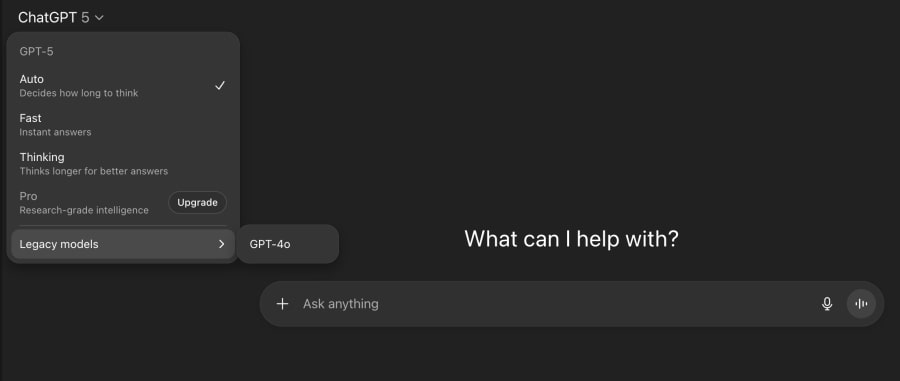OpenAI launched GPT-5 last week, promising to simplify the ChatGPT experience. The company presented it as a “one size fits all” AI model. This model was designed with a router that would automatically choose the best way to answer user questions. OpenAI said this approach would remove the need for its complex model picker menu, a feature CEO Sam Altman has openly criticized. However, just days after launch, it appears GPT-5 has not delivered the unified AI experience OpenAI hoped for.
On Tuesday, Altman revealed on X that GPT-5 now offers three modes: Auto, Fast, and Thinking.
Updates to ChatGPT:
You can now choose between “Auto”, “Fast”, and “Thinking” for GPT-5. Most users will want Auto, but the additional control will be useful for some people.
Rate limits are now 3,000 messages/week with GPT-5 Thinking, and then extra capacity on GPT-5 Thinking…
— Sam Altman (@sama) August 13, 2025
These options are available to all ChatGPT users through the model picker. The Auto mode works like the router originally announced for GPT-5. However, the Fast and Thinking modes allow users to bypass it, directly accessing faster or slower AI responses.
In addition, Altman announced that paid users can once again access legacy AI models. These include GPT-4o, GPT-4.1, and o3, which were removed just last week. GPT-4o is now included in the model picker by default, while the others can be added via ChatGPT’s settings.


Altman also noted that GPT-5’s personality will soon feel warmer, without being as overly expressive as GPT-4o. He emphasized the company’s goal of providing more per-user customization for AI personalities.
The return of multiple models means the model picker is once again complex. This suggests GPT-5’s router alone has not met user expectations. Many hoped GPT-5 would replicate the groundbreaking impact of GPT-4, but its rollout has faced challenges.
The removal of GPT-4o and other models initially triggered user backlash. Many had grown attached to specific model personalities and responses. Altman assured users that in the future, they will receive advance notice before GPT-4 or similar models are removed again.
